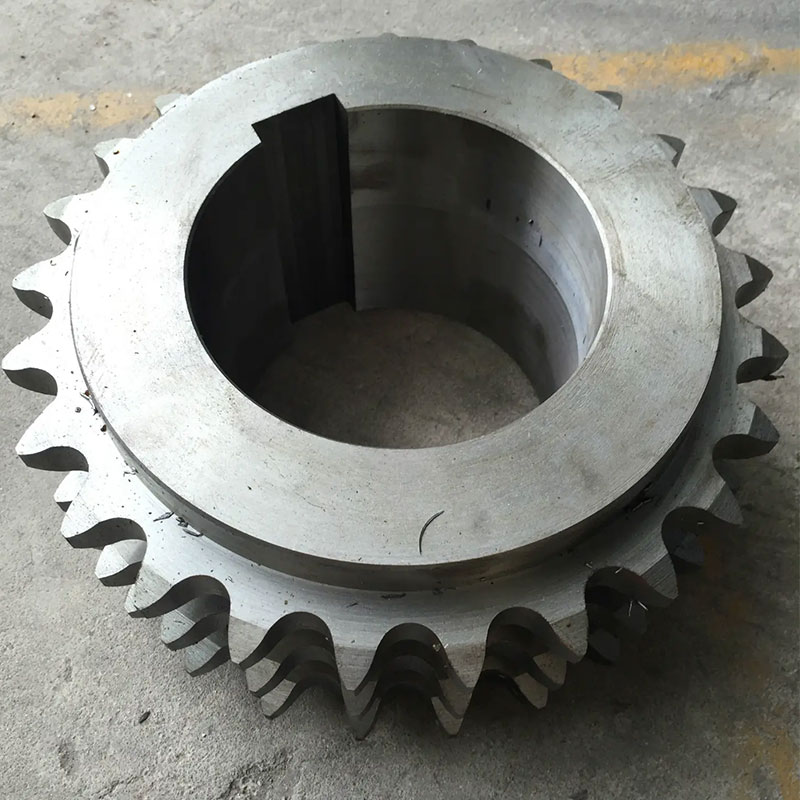
Privacy statement: Your privacy is very important to Us. Our company promises not to disclose your personal information to any external company with out your explicit permission.
2022-04-23
In the West, in 300 BC, the ancient Greek philosopher Aristotle expounded on the problem of transmitting rotational motion with bronze or cast iron gears in "Mechanical Problems". Famous Greek scholars Aristotle and Archimedes have both studied gears, and the famous Greek inventor Gutisibios evenly inserted the pins on the edge of the circular plate workbench to make it mesh with the pin wheel, He applied this mechanism to engraving. This is about 150 BC. In 100 BC, the Alexandrian inventor Herron invented the odometer, in which gears were used. In the 1st century AD, a gear transmission was also used in the waterwheel milling machine made by the Roman architect Pidobis. By the 14th century, gears began to be used in clocks.

In the early years of the Eastern Han Dynasty (1st century AD), there were already herringbone gears. The compass car and Jili drum car that appeared in the Three Kingdoms period have adopted gear transmission systems. The water-rotating continuous grinding invented by Du Yu in the Jin Dynasty transmits the power of the water wheel to the stone mill through gears. The earliest record of the gear transmission system in the history books is the description of the water-borne armillary sphere made in 725 by a party of Tang Dynasty and Liang Lingzan. The water transport instrument and Xiangtai (see ancient Chinese timepieces) made in the Northern Song Dynasty used a complex gear system. In the Ming Dynasty, Mao Yuanyi's "Wu Bei Zhi" (written in 1621) recorded a rack and pinion transmission. In the ruins of Anwuji ancient city in Hebei Province excavated in 1956, an iron ratchet gear was found. The diameter of the wheel is about 80 mm. Although it is damaged, the iron quality is good. Products during the Western Han Dynasty (206 BC to 24 AD). In 1954, a bronze ratchet was unearthed in Tiejiaya, Yongji County, Shanxi Province. Referring to the artifacts unearthed in the same pit, it can be concluded that they are relics of the Qin Dynasty (221 BC-206 BC) or the early Western Han Dynasty. The wheel has 40 teeth and a diameter of about 25 mm. Regarding the use of the ratchet gear, no written records have been found so far, and it is speculated that it may be used for braking to prevent the axle from being reversed. In 1953, a pair of bronze herringbone gears were unearthed in Hongqing Village, Chang'an County, Shaanxi Province. According to the analysis of the tomb structure and tomb objects, it can be determined that the pair of gears originated in the early Eastern Han Dynasty. Both wheels are 24 teeth and about 15mm in diameter. Hengyang and other places have also found the same herringbone gear.

Share to:
Send Inquiry

Mr. Zou
Tel:86--15013568605
Fax:
Mobile Phone:+8615013568605
Email:zou@hycmetal.com
Address:Shop 26-27, Commercial Street, Niutou Village, Niushan Village Committee, Dongcheng District, Dongguan, Guangdong
Related Products List
Mobile Site


Privacy statement: Your privacy is very important to Us. Our company promises not to disclose your personal information to any external company with out your explicit permission.

Fill in more information so that we can get in touch with you faster
Privacy statement: Your privacy is very important to Us. Our company promises not to disclose your personal information to any external company with out your explicit permission.